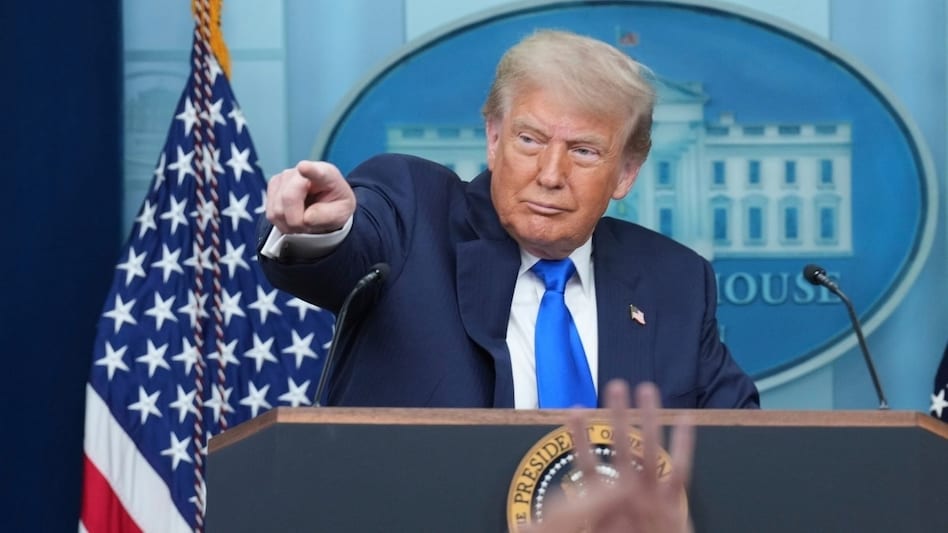 Trump eyes new EU proposal, warns of 25% tariffs if countries skip talks before July deadline
Trump eyes new EU proposal, warns of 25% tariffs if countries skip talks before July deadline
 Trump eyes new EU proposal, warns of 25% tariffs if countries skip talks before July deadline
Trump eyes new EU proposal, warns of 25% tariffs if countries skip talks before July deadlineUS President Donald Trump signalled he’s keeping his options open on the looming tariff deadline, hinting that the July 9 timeline for imposing sweeping duties could shift depending on how global trade negotiations unfold. “We can do whatever we want,” Trump declared from the White House, reflecting both his flexibility and readiness to escalate.
“We could extend it. We could make it shorter. I’d like to make it shorter. I’d like to just send letters out to everybody: Congratulations, you’re paying 25 per cent,” Trump told reporters, leaving little doubt about his willingness to raise trade barriers if talks stall.
The tariff discussions come at the close of a week already dominated by US military action against Iran’s nuclear facilities and heated debates on tax and spending in Congress. Despite these distractions, the administration pressed forward on the trade front. On Thursday, Washington submitted a new proposal to the European Union, while India dispatched a team to the US to advance negotiations.
Treasury Secretary Scott Bessent suggested there’s still room for diplomacy, hinting the July deadline could stretch into the fall. “We’re seeing strong interest from countries offering solid deals,” Bessent said during an interview with Fox Business Network.
“We’ve got 18 key trading partners. If we can finalize agreements with 10 or 12 of them, and we’re already engaging with another 20 significant economies, we could have trade wrapped up by Labor Day,” he added, signaling cautious optimism.
White House Press Secretary Karoline Leavitt echoed that flexibility, describing the July 8–9 dates as “not critical.” She stressed Trump’s authority to adjust the schedule, saying: “If countries don’t come to the table, the president has the option to simply present them with a deal.” Leavitt explained such a move could include reciprocal tariffs designed to protect American workers and interests.
Financial markets took comfort in the prospect of more time for negotiations. Stocks climbed to session highs following Leavitt’s remarks, fueled by hopes that a less rigid timeline might avoid major trade disruptions.
Earlier this year, Trump unveiled a sweeping system of reciprocal tariffs covering nearly all foreign goods entering the US. A 90-day grace period was granted on tariffs above 10 percent, giving trading partners until July 8 to seek exemptions or strike new agreements.
By late May, Trump upped the ante, warning of potential tariffs as high as 50 percent on European Union imports, a region already facing the sting of prior duties.